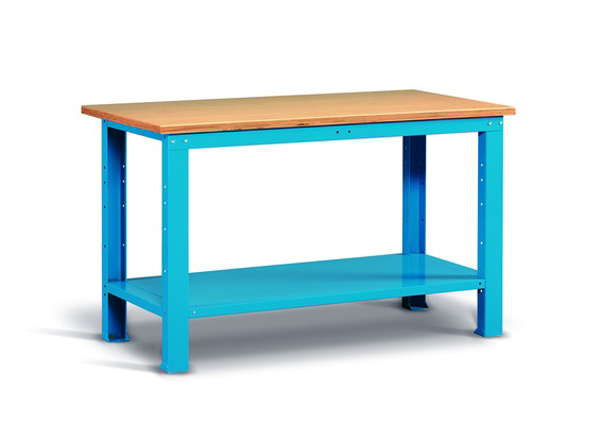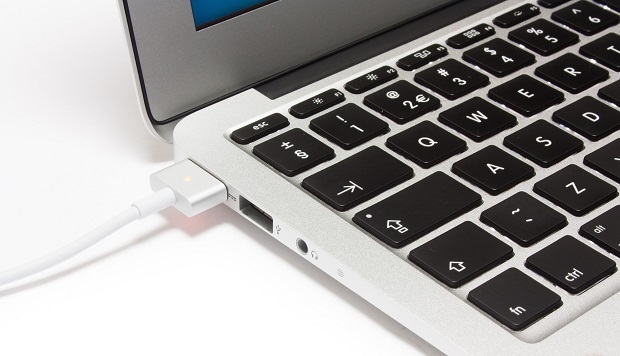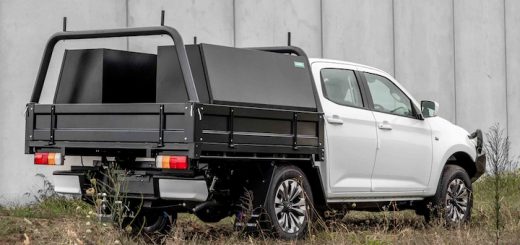Your Guide to TDR Equipment: Streamline Testing and Troubleshooting Processes
Living in these modern times can be stressful, but there’s no denying that it comes with certain perks. Not only is there a tool for every job, but there’s a device for every task, allowing you to carry out work with greater speed, accuracy, and efficiency.
When it comes to industrial equipment, every field has its superhero device—from leak detectors and drain cameras that take the guesswork out of plumbing to utility locators that reduce the risk of costly repairs during construction, and more.
If your day-to-day operations employ communication or electrical systems, you’re probably familiar with the challenges that arise from keeping everything running smoothly. Without the right equipment, it would be difficult, if not impossible, to troubleshoot and locate faults in these complex systems.
What is TDR Equipment?
Commonly known as a fault locator this is a measuring instrument used in electrical and telecommunication engineering. This device helps determine the characteristics of a transmission line, including length, impedance, and dielectric constant.
What Does a TDR Measure?
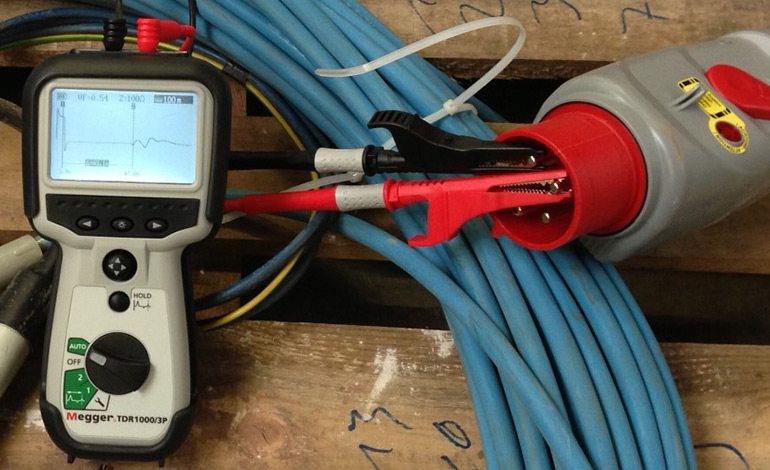
A TDR device sends a pulse down the cable and measures the time delay and magnitude of the reflected wave caused by impedance mismatch. If you need to test and troubleshoot cable and circuit problems, you should consider adding a fault locator to your toolkit as these devices have proven themselves invaluable in ensuring the reliability and performance of modern electrical systems.
By analysing the reflected wave, a TDR cable tester can identify and locate faults such as open circuits and shorts which can affect the quality of the transmission. This information helps engineers and technicians resolve potential problems and prevent their reoccurrence in the future.
Failure analysis is required across various processes and industries, so TDR equipment can be employed anywhere from telecommunications and electrical engineering to aerospace and defence. It can also be used in automotive applications and agricultural sciences.
Types of TDR Equipment
As many fields can benefit from the use of these sophisticated yet easy-to-operate fault mappers, naturally there are several types of time domain reflectometers, including but not limited to:
- Handheld TDRs – portable devices well-suited for field-testing and troubleshooting applications in various industries
- Optical TDRs – designed for troubleshooting optical communication systems
- Wireless TDRs – providing remote access to measurements and data, suitable for use when troubleshooting in inaccessible or hazardous conditions
Tried and Tested TDRs for Professionals
The Australian market isn’t short on test equipment, quite the contrary, there are many options available to suit industry-specific needs. If you’re on the hunt for a new fault mapper, check out these field-tested devices down below.
BI Communications FaultCaster Digital TDR
Ideal for those looking for a budget-friendly yet professional digital TDR, this handheld device can detect faults on all types of copper cables up to a distance of 2000m. Manufactured to international quality and safety standards, the FaultCaster comes in a robust, water, and dust-proof moulding packed complete with test leads and a holster for easy carrying and operation.
AEMC CA7024 TDR and Length Meter
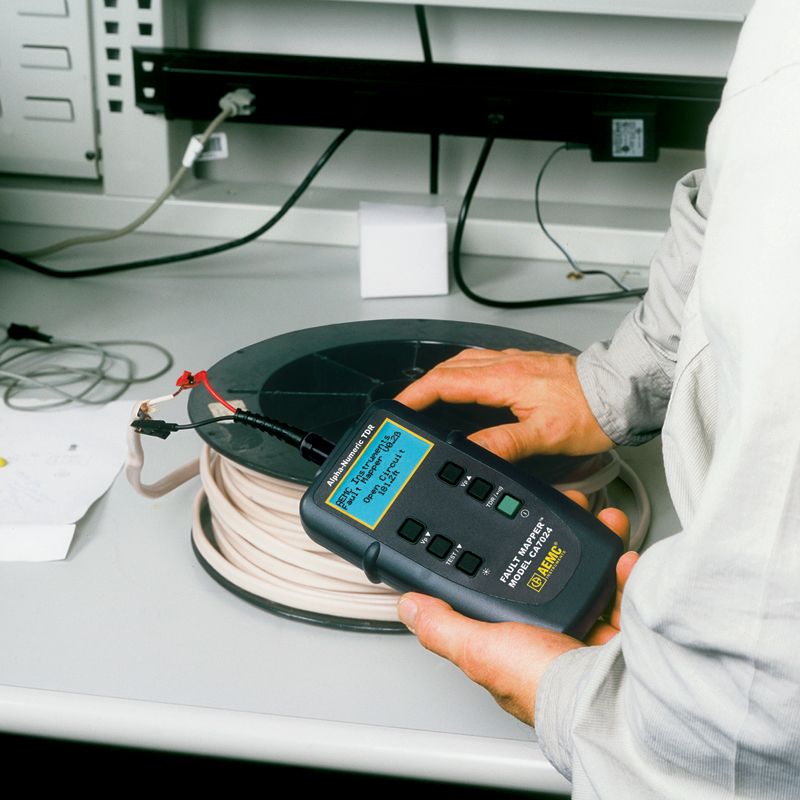
A versatile and reliable handheld alphanumeric fault locator and length meter that incorporates fast-edge step technology for improved range and resolution. The CA7024 can be used in various applications to detect opens and shorts and measure the length of cables up to 2000m.
AEMC CA7028 Wire Mapper Pro LAN Network Cable Tester
The AEMC CA7028 is designed to detect opens, shorts, crossed wires, crossed, pairs, reversed pairs, split pairs and shield faults in UTP, STP, FTP and SSTP cabling. In addition, it can measure and indicate cable length and identify telephone and data lines.
BI Communications TX2003 Long Range Digital Time Domain Reflectometer TDR
An extremely lightweight, yet capable TDR with a range of up to 6000m. The UX2003 is packed full of innovative features housed in a rugged, IP54-rated ABS enclosure, making it well-suited for outdoor use. This device allows for easy and accurate detection of faults and their locations on metallic cables, providing information on 6km runs in a matter of seconds.
Riser Bond 1550 Metallic Time Domain Reflectometer
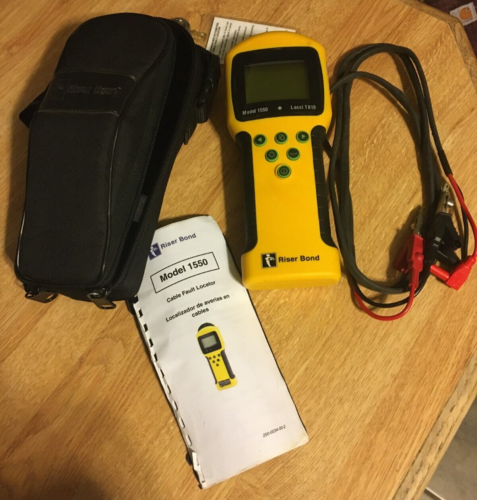
The Riser Bond is a lightweight and compact fault mapper that’s easy to use and adaptable to various industries and applications thanks to the modular test lead design. The weather-resistant and durable housing makes it a perfect tool for technicians and field engineers working outdoors or indoors. It’s capable of detecting opens, shorts, splices, and other cable faults as well.
Closing Thoughts
Hope this gives you a better understanding of the purpose and uses of this type of technology and a brief overview of the latest devices available online and in stores nowadays. With that being said, you can now visit your local test equipment supplier and upgrade your toolkit with a new troubleshooting device.
